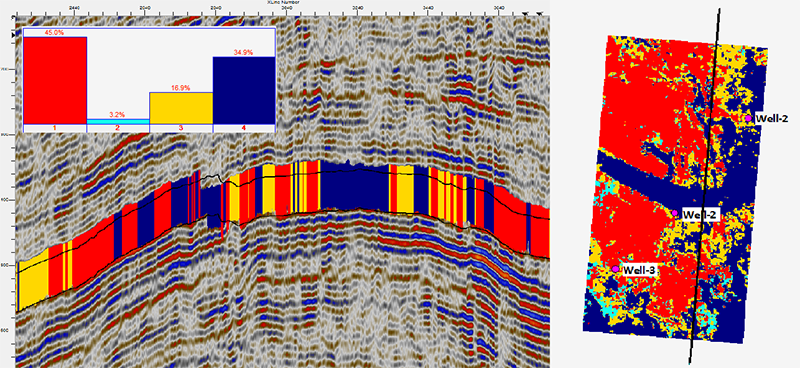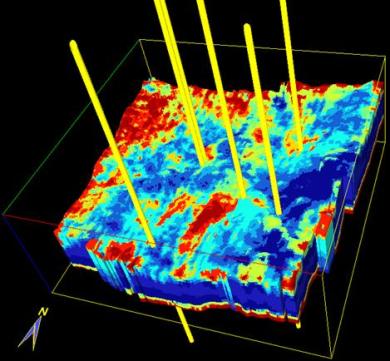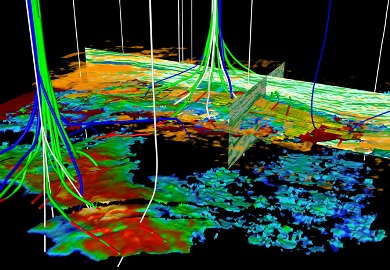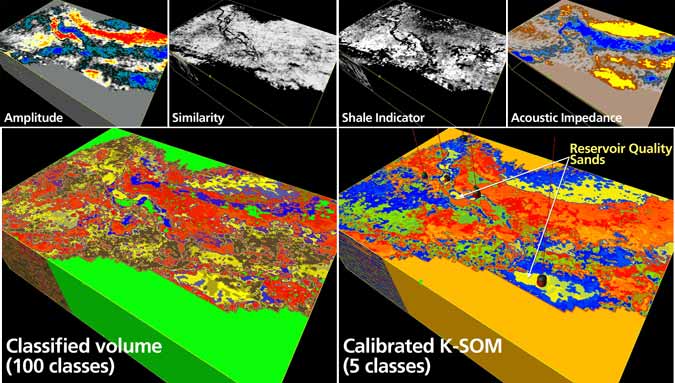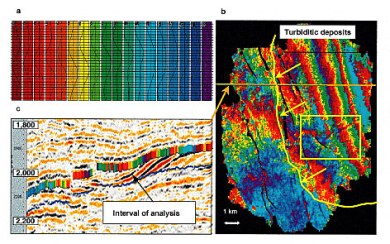Seismic Facies Classification
Seismic Facies Analysis is an important step in the interpretation of seismic data for reservoir characterization. Seismic facies interpretations play a significant roll in initial basin exploration, prospect evaluation, reservoir characterization, and ultimately, field development.
A seismic facies is a stratigraphic unit or region that has a characteristic reflection pattern distinguishable from those of other areas. Regions of differing seismic facies are usually delineated using descriptive terms that reflect large-scale seismic patterns such as reflection amplitude, continuity, and internal configuration of reflectors bounded by stratigraphic horizons.
A seismic facies can be defined as a group of seismic amplitude variations with characteristics that differ distinctly from those from other facies. This could be based on analysis of either the seismic waveforms or the seismic attributes.
PPZG has a team of experienced personnel who are able to assume a relationship between seismic character and physical properties can be demonstrated, seismic facies volumes can then be used to predict rock property distribution and condition geologic models.

